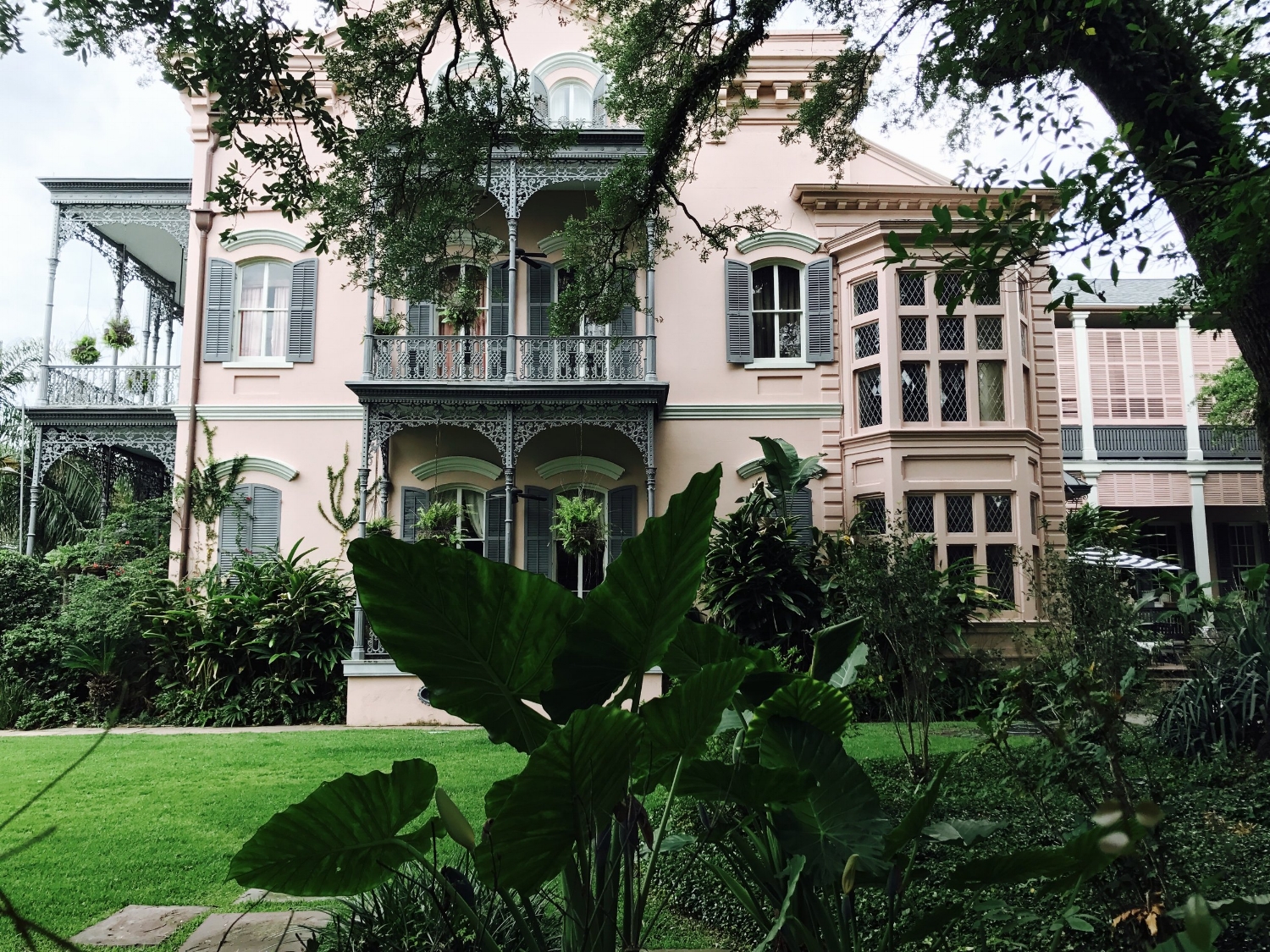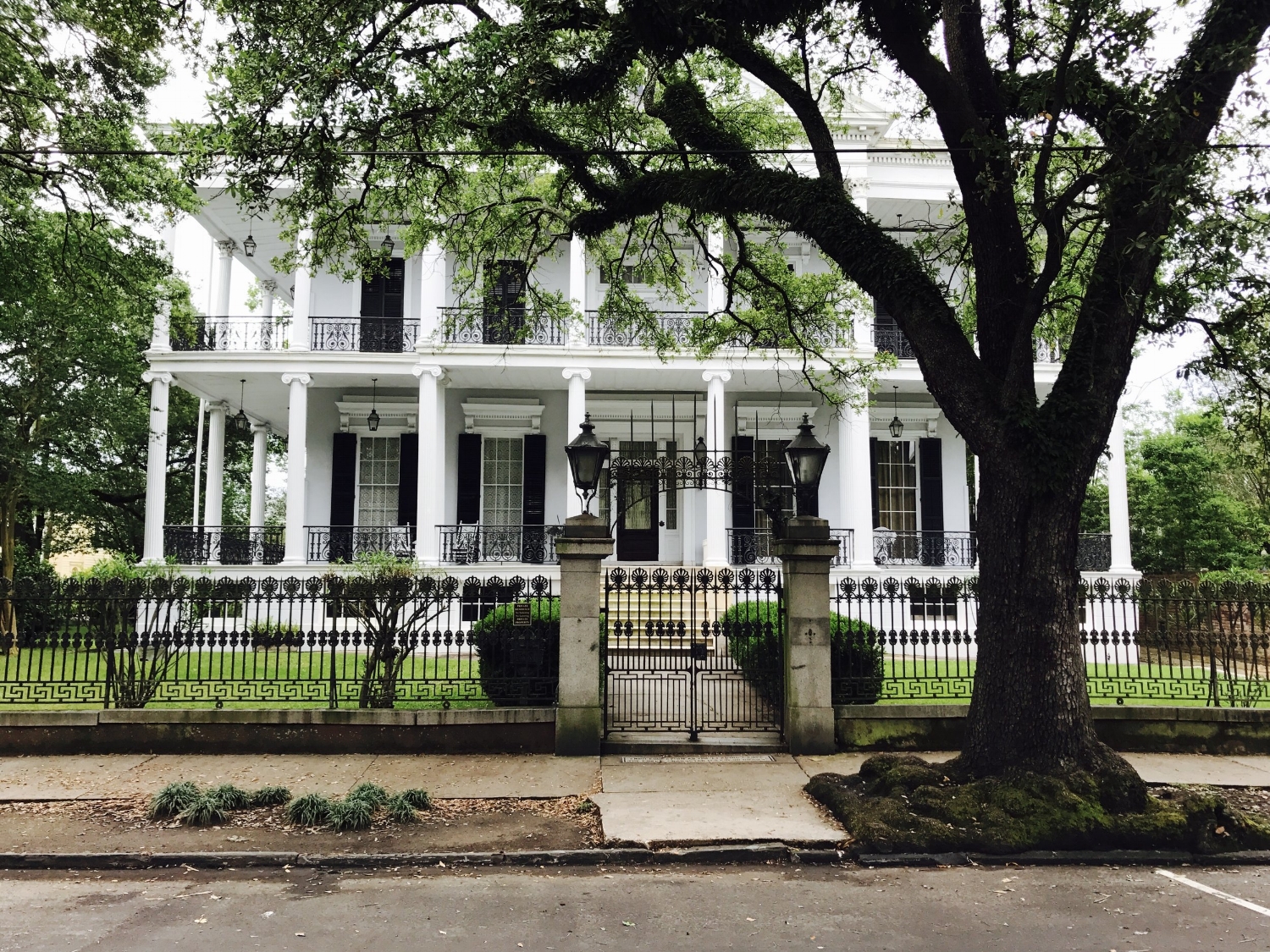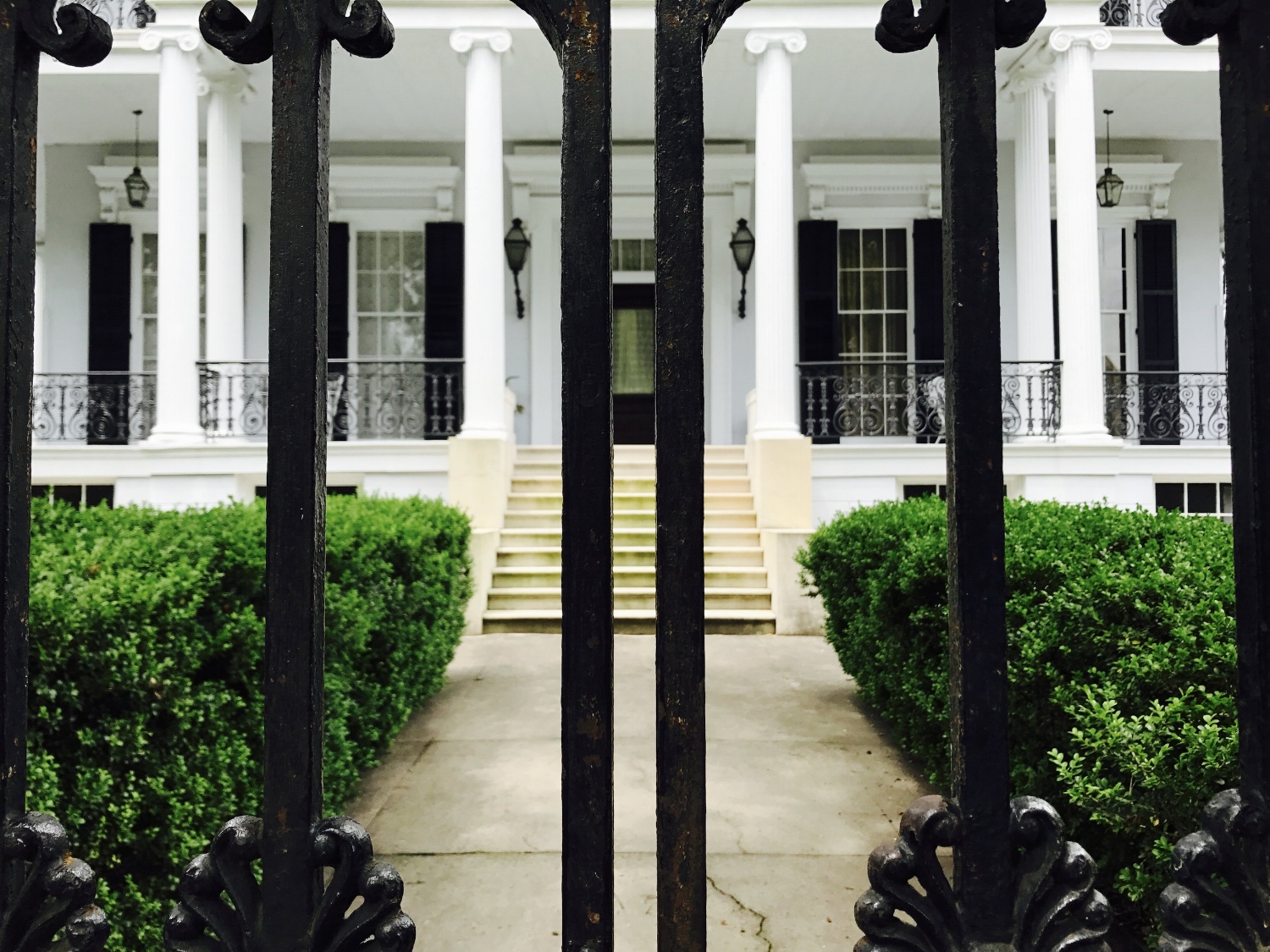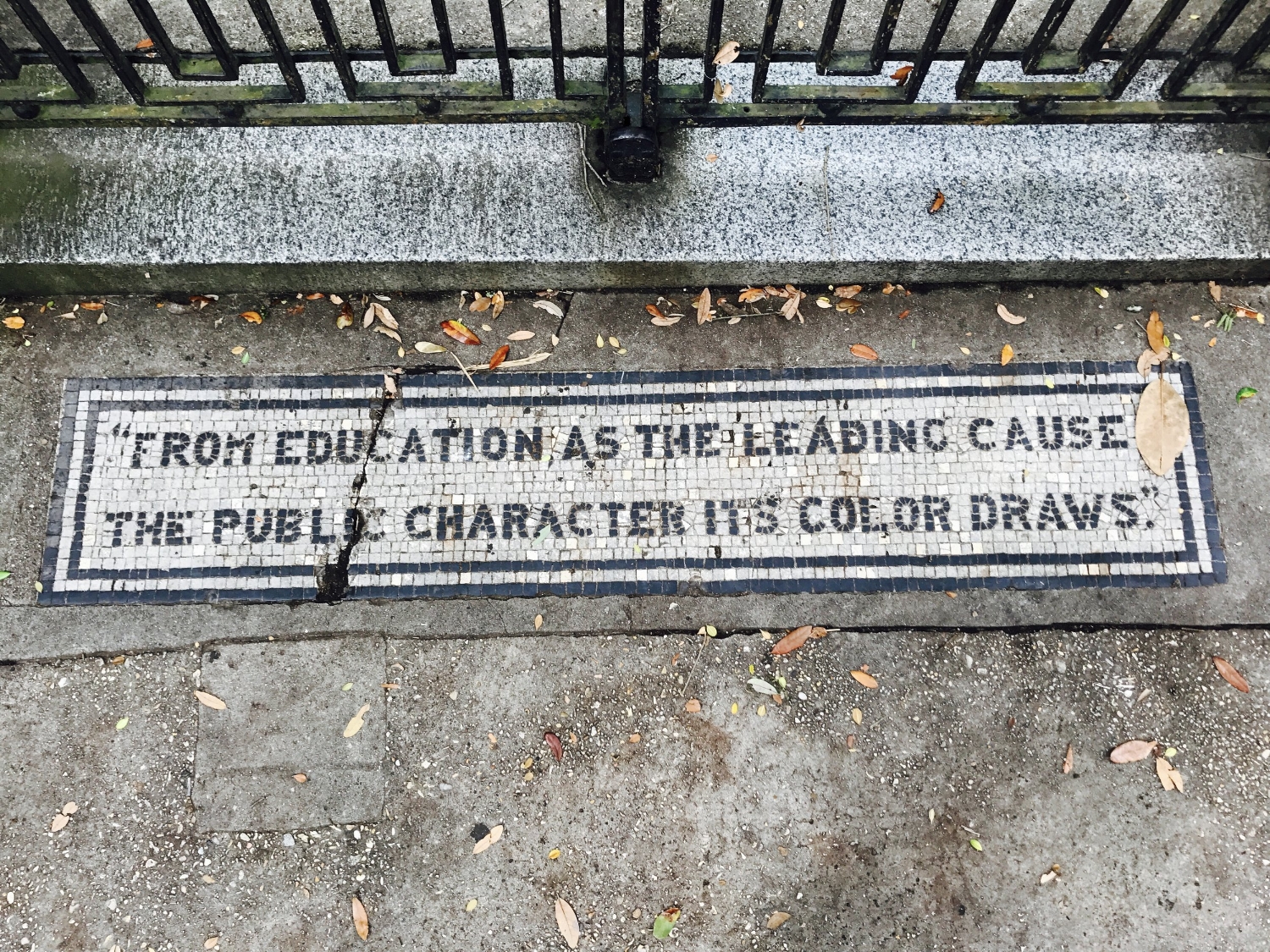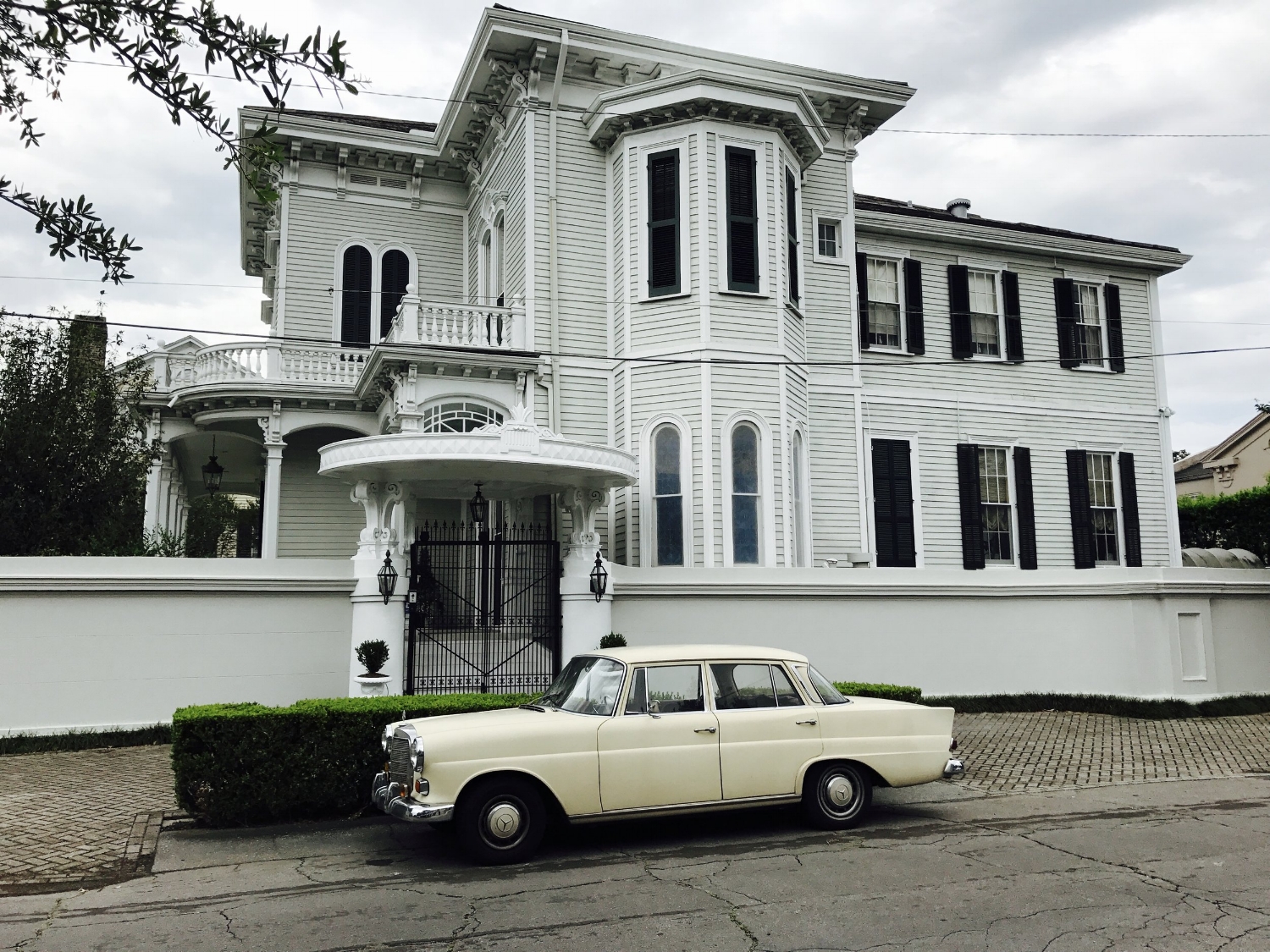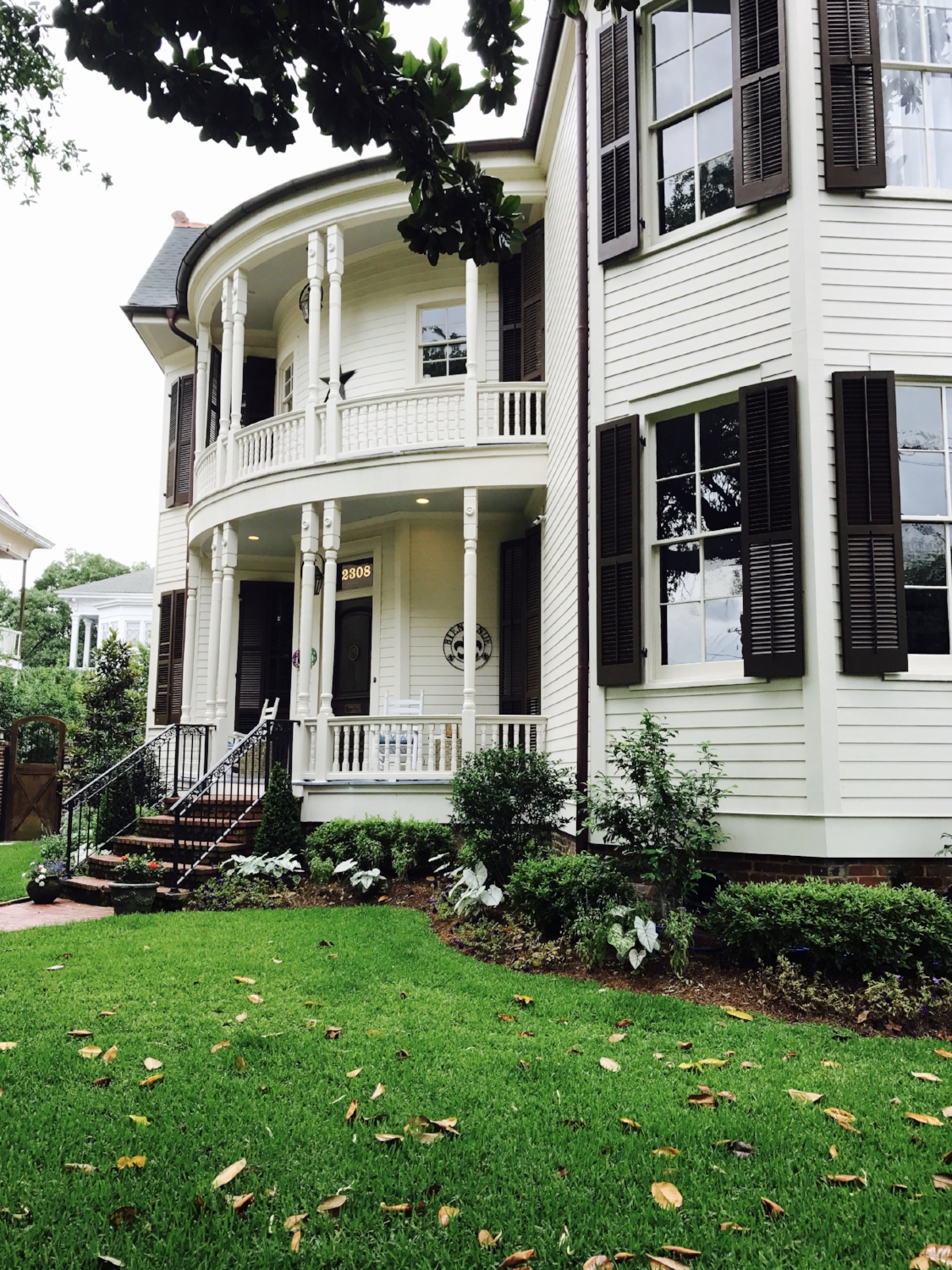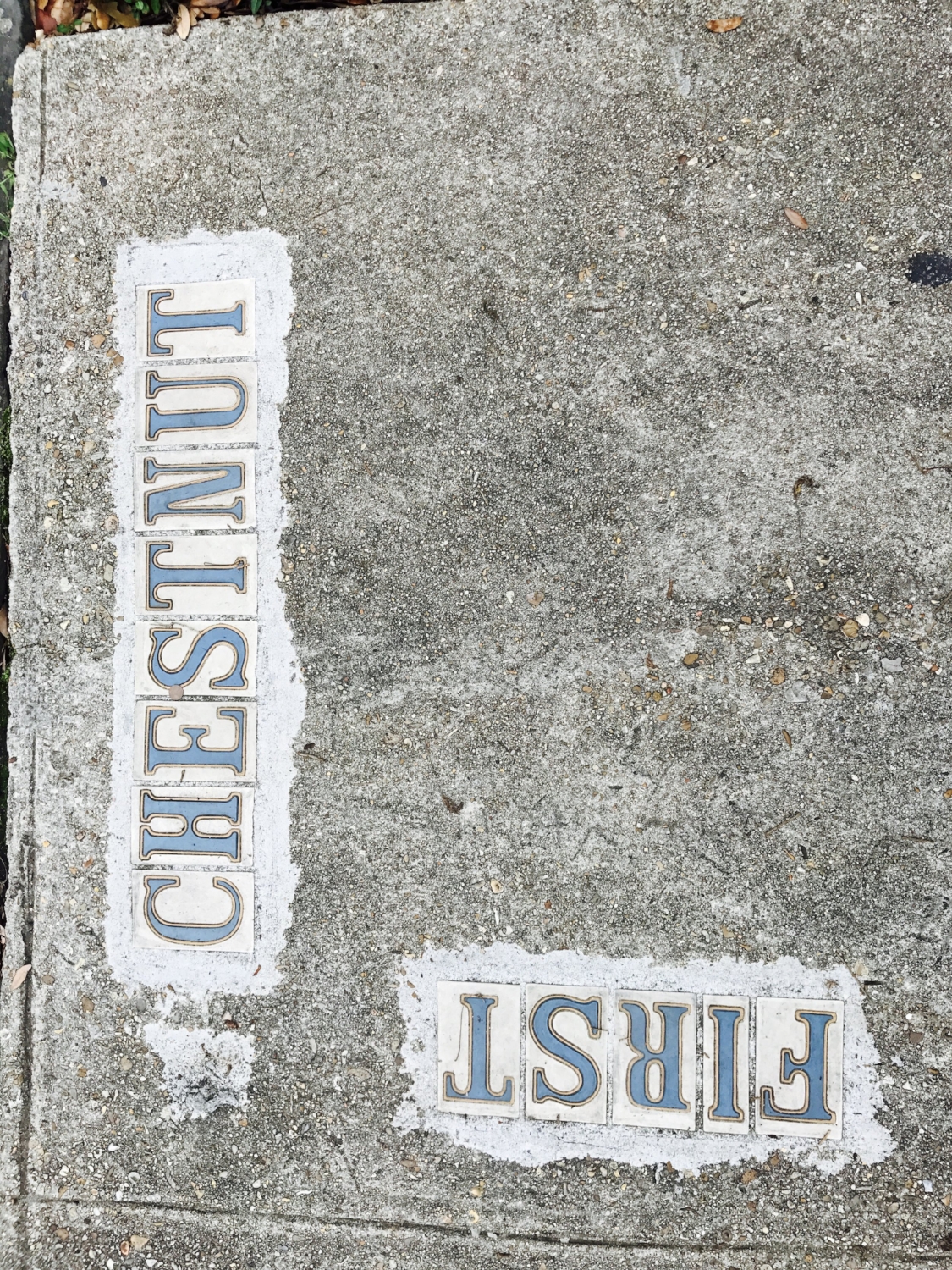Guided by the pages of our novels, our tour of New Orleans led us to the elegant and stately mansions of the Garden District. Just a quick ride down St. Charles in a streetcar, took us into the heart of the historic district of enormous columns, glistening paint, and elaborate ironwork; each structure completely distinct from the next. In a single block we could find a home in every one of the colors we could imagine, and yet, they all seemed to meld together to create a cohesiveness. In true New Orleans’ fashion, this neighborhood survived to tell the tale of a culture-blending that brought together Victorian, Greek Revival, and Italianate architecture. These antebellum mansions, with their lush, green lawns, sprawling oaks, and gas-lit lamps, decorate New Orleans with its well-preserved charm.
It wasn’t difficult to imagine Walker Percy’s protagonist, Binx Bolling, walking down Jackson Avenue on his way to his aunt’s house for lunch. Percy’s novel, The Moviegoer, follows Binx on his existential crisis as he contemplates the ordinary, attempting to finding meaning in the day-to-day rituals of life. Binx was raised in the affluence of the Garden District, but removes himself to live in the middle-class neighborhood of Gentilly. Following his desire for meaning, Binx only returns to the Garden District to appease his genteel, Aunt Emily. He spends many an afternoon traveling through the city on his way to lunch in the Garden District, observing all elements of average New Orleans life in hopes of finding purpose in his own.
As we walked through the Garden District, I could imagine the sort of people Binx describes; the sort of people that build great mansions on deep, vast, plots, to keep themselves separated from their neighbors and the lives of those around them. Percy’s narrator of Binx realizes that life cannot be had this way. And as we walked the streets that Binx would have, the distance that wealth makes, seemed greater than it had before.
We each aimed to take pictures of the stellar architecture, but leaned over high shrubs, pointy iron-fences, and tall brick walls. Each house in the neighborhood was far removed from the sidewalk and each neighboring structure farther from the last. The Garden District had a sense of space that the rest of New Orleans had not entertained. The Tremé, The French Quarter, and the Marigny, were all full of shotgun and row houses, townhouses, and buildings that were smacked up against each other. The rest of New Orleans seemed more of a space where paint colors overlapped, where trees seemed to share land, and where cultures wanted to shake hands. The Garden District seemed to pride itself on a more manicured life.
But even there, in the great beauty of it all, the decay was visible. Each home had its flaws and its own obvious battles with the elements. Even in this utopian ideal, the viciousness of the subtropical climate could not be kept away. Constant rain and mucky soil left the porches of the Garden District just as uneven as those in the Tremé, the beating sun and humid air chipped paint there as much as it did in the French Quarter, and the thick roots of the oak trees tore up as much pavement as they did in the Marigny.
“My first idea was the building itself. It looks like a miniature bank with its Corinthian plasters, portico and iron scrolls over the windows… A little bit of old New England with a Creole flavor… ”


